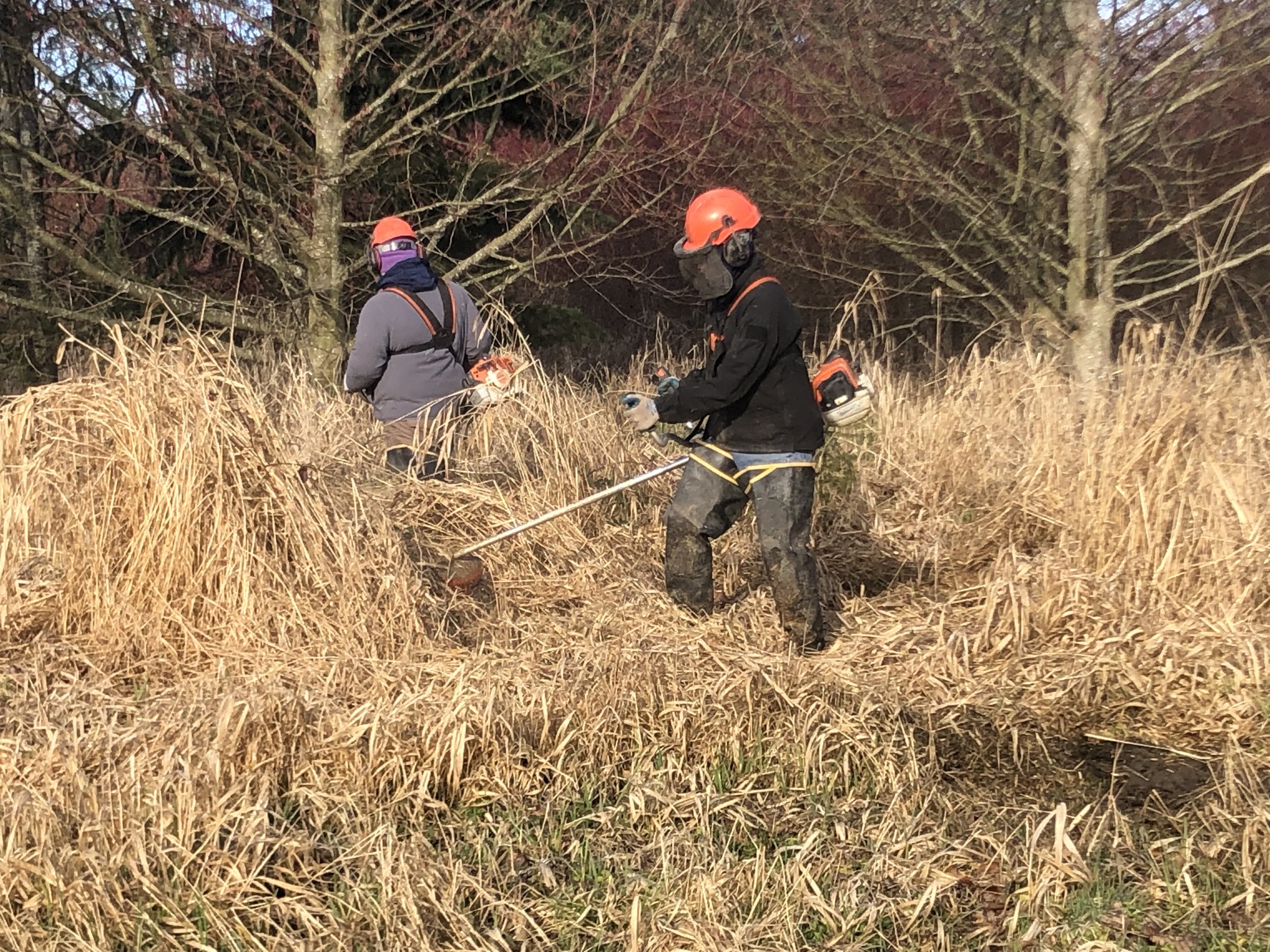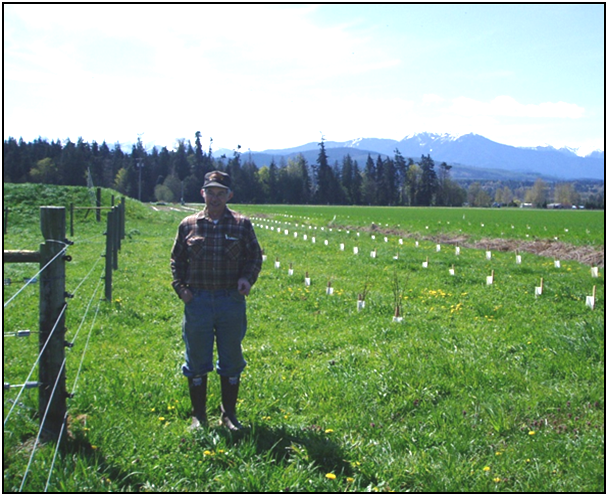











Do you have a creek or stream on your property? Not sure what you can and can't do in or near the stream? Conservation District planners are available to provide free, on-site technical assistance to help you learn more about your stream and how to protect it. Assistance may include providing information about fish and wildlife habitat and how to enhance it, identifying native plants, and helping you address problems such as noxious weed infestations.
FINANCIAL ASSISTANCE for STREAM & RIPARIAN AREA ENHANCEMENT
Conservation Reserve Enhancement Program (CREP) - Covers 100% of costs for planting native trees and shrubs along salmon-bearing streams (or waterways that drain into salmon-bearing streams). A minimum of 1 acre of buffer enrollment is required. Land must have been cropland/pastureland historically. Ideal for farmers or those who want to put in a large buffer. This program also provides 5 years of maintenance.
Buffers for Salmon - Covers 100% of costs for planting native trees and shrubs along salmon-bearing streams (or waterways that drain into salmon-bearing streams). Ideal for those who would like to do short-term installments, with no large contracts or minimum acreage required.
Are you interested in planting a riparian buffer on your property? Please click on the button below to fill out a quick form to request assistance from our conservation technicians.
2024 Riparian Planting Season: Here’s an infographic summarizing our 2024 Planting season! If you would like to learn more about our riparian projects, check out our restoration page.
plant protector around a douglas fir with mulch.
What are those blue/white tubes?
They are plant protectors. They keep mice and voles from girdling newly planted trees and shrubs, and protect plants from weed whackers. CREP and Buffers for Salmon pays for plant protectors to be installed on trees/shrubs planted through the program.
What are anadromous fish and why do they need riparian buffers?
Anadromous fish are born in freshwater, spend most of their lives in saltwater, and return to freshwater to spawn. Examples include salmon, trout. We have 5 salmon species on the Olympic Peninsula, including Chinook, chum, coho, pink and sockeye. Steelhead trout often gets lumped with salmon, but they are the anadromous form of the rainbow trout (when the trout migrates to the ocean, they become steelhead). Riparian buffers benefit these fish as they require cold water, Riparian buffers, the vegetated area next to a waterway, play an important role in making stream habitat more livable for these fish. The shade provided by these trees and shrubs help keep river temperatures cool, especially during the hot months of the year. Overtime, trees falling in the waterway can make the stream system complex, slowing down the river and creating pools, great for spawning fish looking to rest.
ADDITIONAL RESOURCES

Clallam County Critical Areas Ordinance - regulations for protection and management of environmentally critical areas, like streams and wetlands. Refer to Part III for setbacks/buffers along waterways.
Ecological/Habitat Restoration
Video of Coho salmon swimming up the Salmon Cascades on the Sol Duc River. Video credit - Kevin Merrigan.


